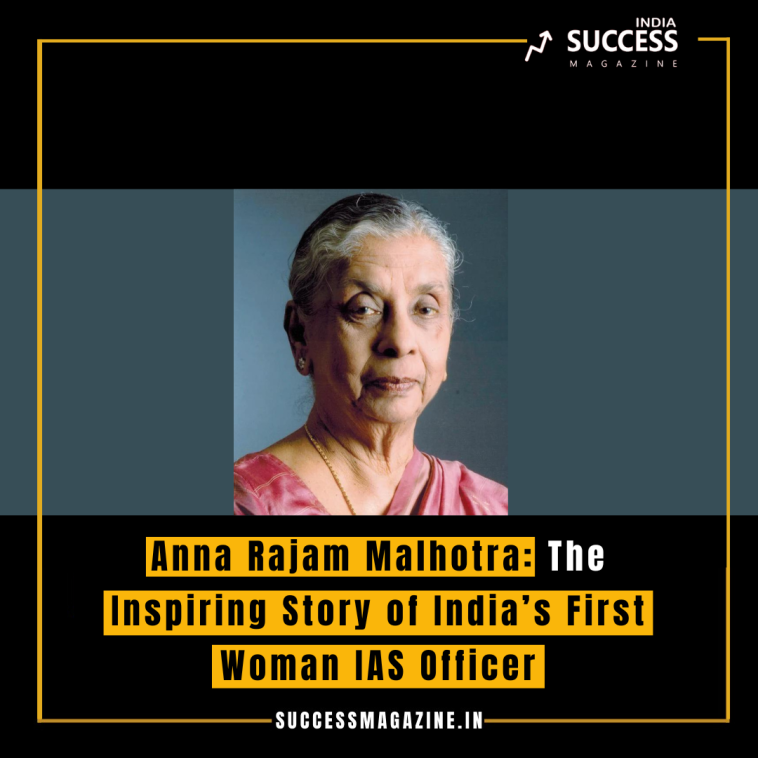Anna Rajam Malhotra’s story is one of pioneering spirit and trailblazing achievements. As India’s first woman to join the Indian Administrative Service (IAS), she broke through gender barriers in a time when such feats were rare. Her journey not only marked a significant milestone in Indian history but also served as an inspiration for generations of women aspiring to make their mark in public service.
Born on November 23, 1927, in a small village in Kerala, Anna Rajam Malhotra was raised in a time when opportunities for women were limited. Despite these constraints, she was determined to pursue education and professional success. After completing her schooling, she attended the prestigious Madras University, where she excelled in her studies. Her academic brilliance and dedication paved the way for her entry into the civil services, a field dominated by men.
In 1951, Anna Rajam Malhotra made history by becoming the first woman to join the IAS, following the introduction of the civil services examinations in independent India. At that time, the idea of a woman in such a high-ranking administrative role was unconventional and faced significant societal resistance. However, Anna Rajam Malhotra’s courage and commitment to her role overcame these challenges. Her appointment was not just a personal victory but a symbolic triumph for women’s empowerment and gender equality in India.
Throughout her illustrious career, Anna Rajam Malhotra demonstrated exceptional administrative skills and a deep commitment to public service. She held various important positions, including District Collector and Secretary in the Ministry of Commerce. Her work in these roles was marked by efficiency, integrity, and a focus on social development. She was instrumental in implementing policies that fostered economic growth and improved public welfare.
One of her notable contributions was her work in the field of social reform. As District Collector, she was actively involved in efforts to improve the living conditions of marginalized communities. Her initiatives included the promotion of education for girls, health care for underprivileged populations, and infrastructure development in rural areas. Her impact was widely recognized and appreciated, and she became a role model for aspiring civil servants, especially women.
Anna Rajam Malhotra’s achievements went beyond her professional life. She was a trailblazer for gender equality, challenging societal norms and inspiring women to pursue careers in fields traditionally dominated by men. Her success demonstrated that determination and competence could break through barriers of prejudice and pave the way for future generations.
In retirement, Anna Rajam Malhotra continued to be an advocate for women’s rights and social justice. Her contributions to public service and her efforts to improve the status of women in India left an indelible mark on the country’s socio-political landscape. Her legacy lives on as a beacon of inspiration for those who strive to achieve excellence and make a difference in their communities.
Anna Rajam Malhotra’s story is not just about breaking glass ceilings; it is about paving the way for others to follow. Her life’s work serves as a powerful reminder of the impact that one individual’s courage and perseverance can have on shaping a more inclusive and equitable society. As India continues to progress, the pioneering spirit of Anna Rajam Malhotra remains a guiding light for those aspiring to create positive change in the world.


